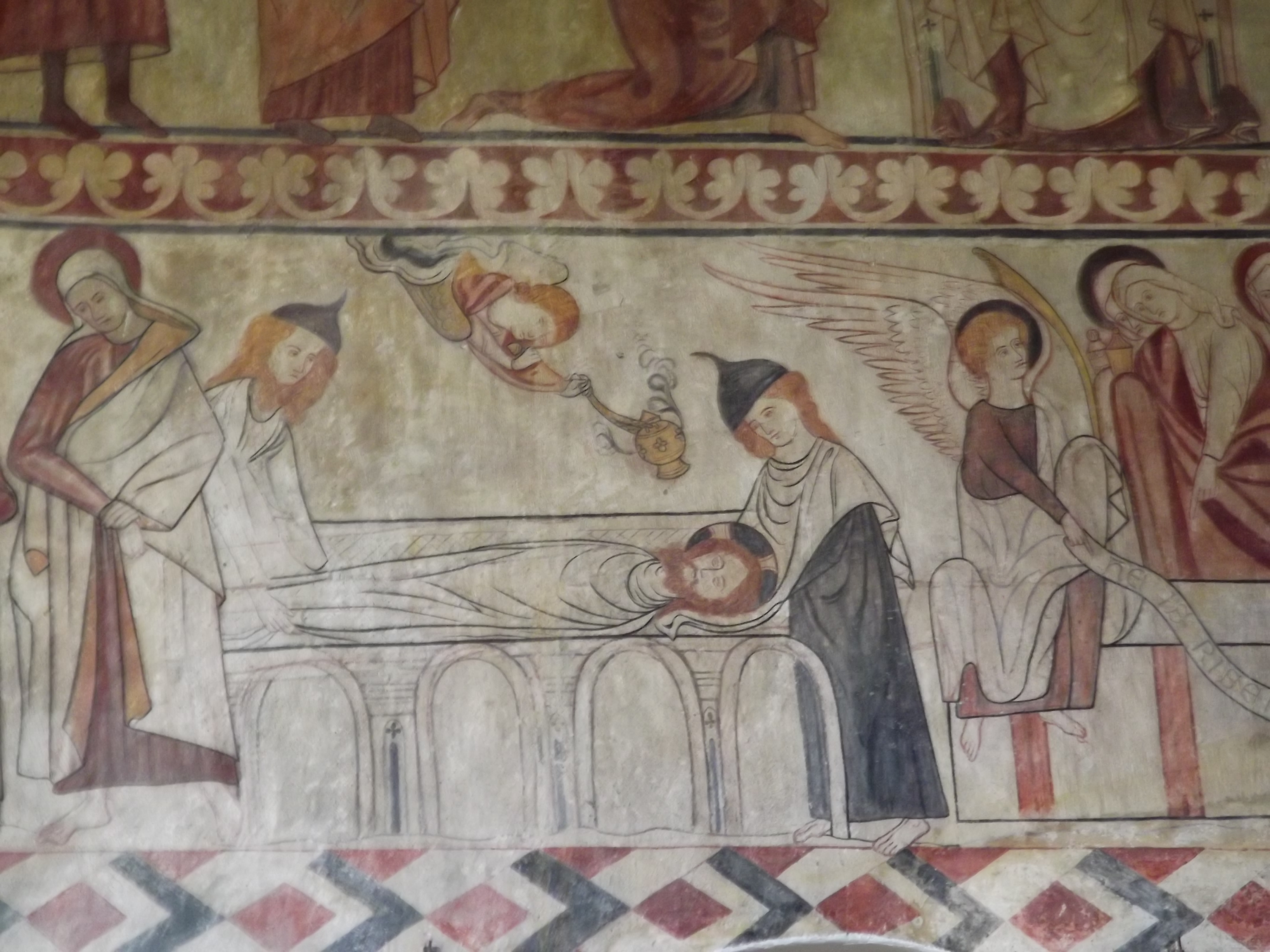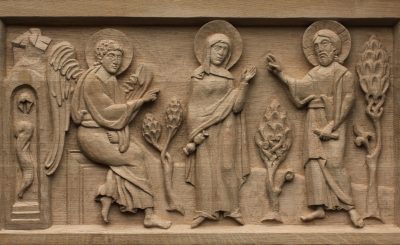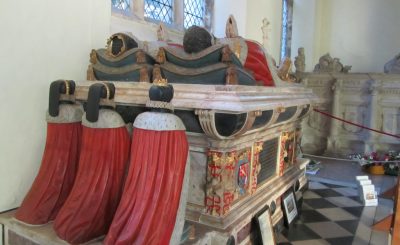The modern facade of many small churches hides a colourful past. Today’s unadorned walls belie the glorious decor commonplace before the English Reformation.
Pre-reformation churches were aglow with colour and images covering every flat surface. The art told a graphic story, an effective method of communicating to medieval England where the population was largely illiterate.
Wall paintings served as illustrations for religious study. They showed great biblical events, the stories of the gospel and often included a depiction of the day of judgement to act as a reminder of man’s mortality.
Before Protestant belief supplanted Catholicism, the backdrop to worship was a vivid visual landscape of carvings, statuary, tapestries and wall paintings.
Change happened gradually but was nonetheless widespread, resulting in an eradication of imagery on church walls across the nation. A reflection of Tudor and Stuart religious politics, the era was called the Age of the Iconoclasts. However, the question of religion was unsettled and, in this turbulent religious setting, not everyone advocated the removal of the precious imagery.
Both Henry VIII and his son Edward VI dismissed Catholicism and its trimmings. Then pro-Catholic Mary Tudor became queen. She attempted to re-establish the Catholic faith, including efforts to replace damaged, defaced and destroyed church artefacts.
Mary was too late to prevent the whitewashing of church interiors and many irreplaceable wall paintings were lost.
Later, Victorian church restorers destroyed countless wall paintings as they hacked off the whitewashed plaster to resurface walls.
Fortunately, the same whitewash that covered so many church treasures also served to protect them through the centuries.
In the 1940s, a few careful church restorers made startling discoveries. Under the successive coats of whitewash, wall paintings remained beautifully protected from the elements. Recognisable in style as similar to historic wall paintings found in European places of worship where Reformation was not a factor, these hidden treasures had a distinctly English flavour.
One of the most beautiful and unspoilt small churches in the UK can be found in the Sussex hamlet of Hardham, just a few miles from the city of Chichester. The most exciting feature of Hardham church is the remarkable collection of wall paintings dating back to the beginning of the twelfth century.
It is thought that these wall paintings were produced by a “travelling workshop’ of artists who also created other works of art at Clayton, Coombs and Plumpton. All these churches are near the city of Brighton and Hove.
The wall paintings at Hardham are considered to form one of the most complete schemes of medieval painting in the UK. They are outstanding in both colour and form and are well worth a visit.


